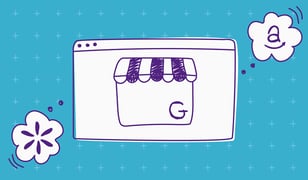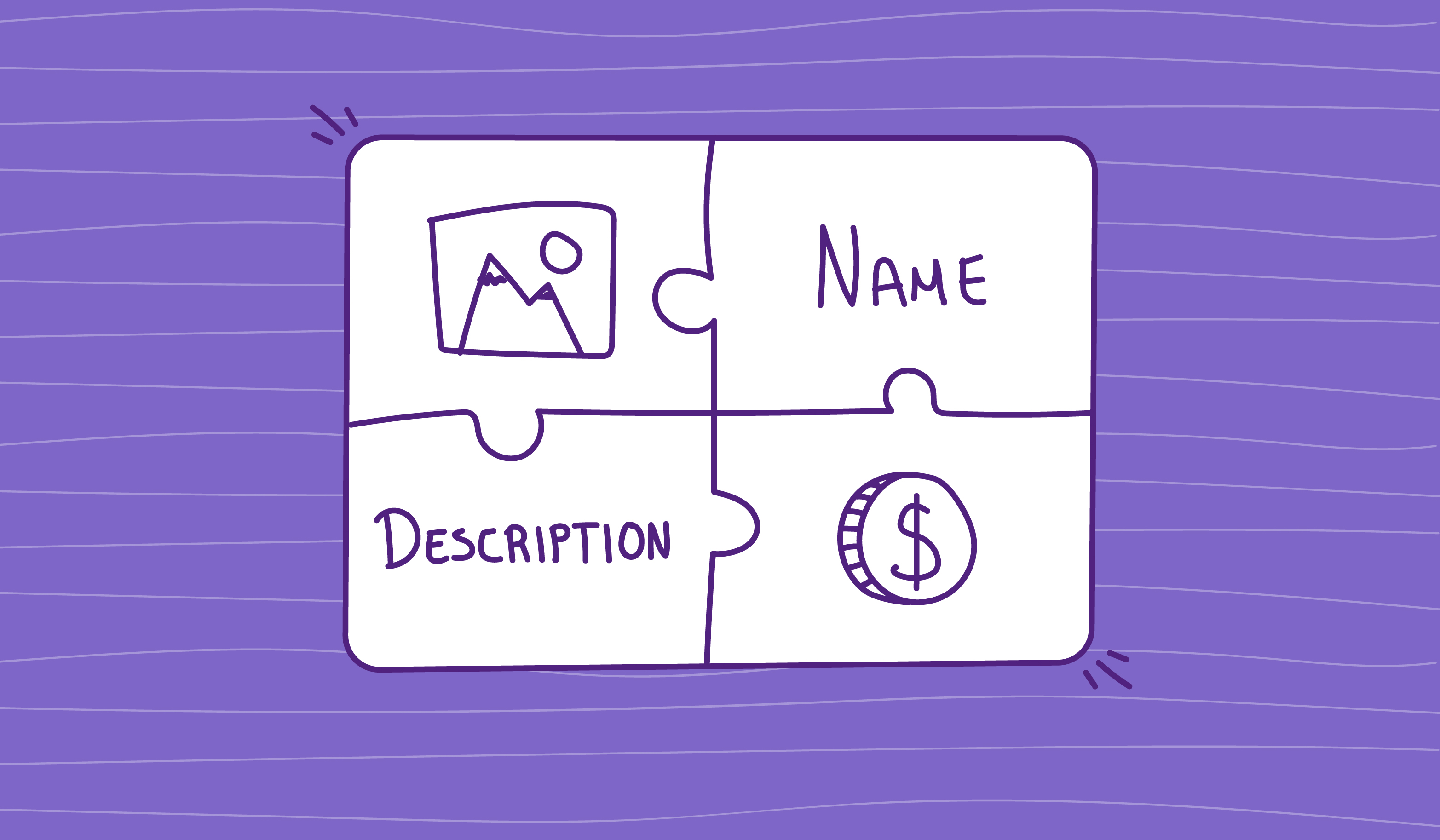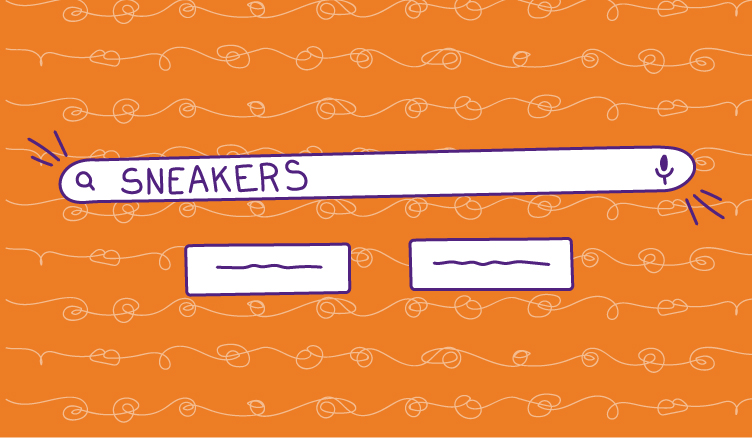Multichannel commerce is a game-changer for both brick and mortar and online businesses. But, you may be wondering what Google My Business (GMB) has to do with multichannel commerce. Well, apart from it being the world’s most-visited site, Google currently holds more than 92% of the search engine market share.
This free resource can help customers find you, choose you, and buy from you.
What is Google Business Profile?
The reason why it’s been on everyone’s lips recently is that it’s no longer being called Google My Business. Now, it is known as Google Business Profile.
In the past, you could add images, your physical address, phone number, website URL, trading hours, and more to help customers find your business. However, GBP has taken it a step further, making your business listing visible across more Google services. These include Google Search, Google Maps, and Google shopping.
But, what does this mean for your business? This free profile allows you to increase your visibility, ultimately, what you need to attract customers.
Let’s break it down further; what are the benefits for multichannel commerce?
1. It helps bring in more customers to your physical store
While you may have an online store, selling on multiple channels, you still want to drive foot traffic to your physical store. New research done by PwC found that nearly 40% of customers make purchases from a physical store at least once a week, while only 27% do the same online. That's some strong competition.
This shows that physical stores still play a vital role in many customers’ lives, and there is an opportunity for you there. Fortunately, a Google Business Profile can help you bring customers to your physical store. How? When a customer searches for a product or service you provide on Google, your business can show up on Google Maps, Search, Display, or YouTube, which can help them find you.
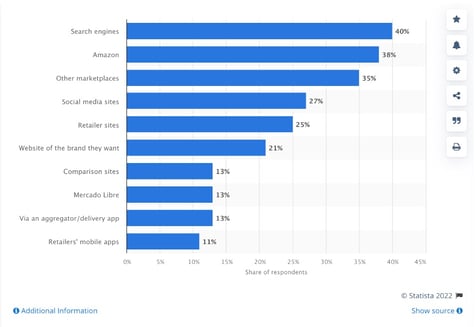
To add, Google shares that 76% of searches on mobile phones result in a visit to the store on the day, and 28% of local Google searches result in a purchase.
With the new update, you can also answer questions.
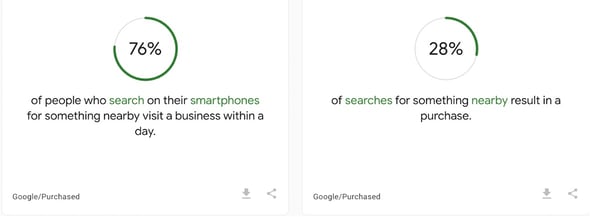
So, having your business profile updated is a sure way for your customers to go to your store. If they cannot come to your physical store, your Google Business Profile will provide them with a link to your website, allowing them to shop online.
2. The ability to show your local in-stock inventory
You can create an omnichannel strategy with the help of your Business Profile.
Before, customers wouldn’t be able to see what you had in stock in your physical store, but now they can. It’s not only limited to your website; with a Google Business Profile, U.S and Canada retailers can make their inventory show up so that shoppers can see which nearby stores have the item that they’re looking for.
Retailers can sign up for Pointy from Google on their Business Profile (it’s free, by the way!), and this will help automatically upload all the products you have in-store as it connects to your point of sale system. Or, if you have a local inventory feed (a list of the products you sell in each store). You can then submit your feed through Google Merchant Center or manually add them to your Business Profile.
Now, GBP can help you create the best experience for customers who:
- Customers who are looking for a specific product and ensuring they know which physical store has in stock
- Customers who research online prefer to purchase in-store as they can't get the experience of touch, trying out, and feeling a product on an online store.
- Customers need to purchase a product immediately for a last-minute gift.
All these scenarios in a customer’s journey can be solved by your business when you have GBP allowing them to make their way to you.
3. Helps with your SEO and marketing efforts
We know that customers, whether they prefer traditional stores or websites, mostly start their product search on Google. This means that SEO is vital for any business that wants to succeed with the modern and digitally savvy consumer.
SEO tactics are there to help you rank on Google, and they can further help you:
- Build credibility and become a trusted worthy brand
- Attract local shoppers with local SEO
- Improve your marketing efforts in an affordable manner
- Boosts store sales and traffic
But how can your Business Profile help boost your efforts, particularly on google search and map? Studies have shown that the average company receives 1,009 customer searches each month, with 84% of these coming from discovery searches, and businesses in the U.S receive 26% of their views from Maps results. With the new update to Maps, you can only imagine how much more visible businesses with Business Profiles will be. Your profile can help your local SEO by making your business stand a better chance of being in the local 3-pack and in the top search results. But, it can also indirectly help your website rank.
This is because Google sees this as a social signal, especially when it has reviews, as it provides social proof and will make Google drive traffic to your website.
GMB is a must-have, not a nice to have
As you can see, Google My Business has always been valuable for businesses, but with the Google update, it has become a must-have for multichannel success.
Customers need to be well informed about your business, and GBP can help you do that. It allows your customers to view trading hours and read reviews about your business. And now, with the map update, customers can easily find you. (Not to mention, customers can even send messages directly to your company via the Google My Business reporting interface.) This free tool improves the experience your customers have when engaging with your business, regardless of their preferred method of shopping.
In ecommerce, or any business for that matter, there are so many things happening that continue to keep retailers on their toes. This is why having an ecommerce tech stack that automates processes is so important. But, having an extensive tech stack can be expensive, so it’s important to find tools that do more than one job. For example, Plytix offers the best PIM for ecommerce and SMBs.
This next-gen product information system allows you to store content and digital assets (think of the images you want on your Business Profile). It can also help with product content syndication to your website and various sales channels.
Getting a PIM that syndicates to other platforms and works as digital asset management (DAM) is a sure way to cut the cost of your tech stack. See what product database software can do for you by reading this free white paper.

